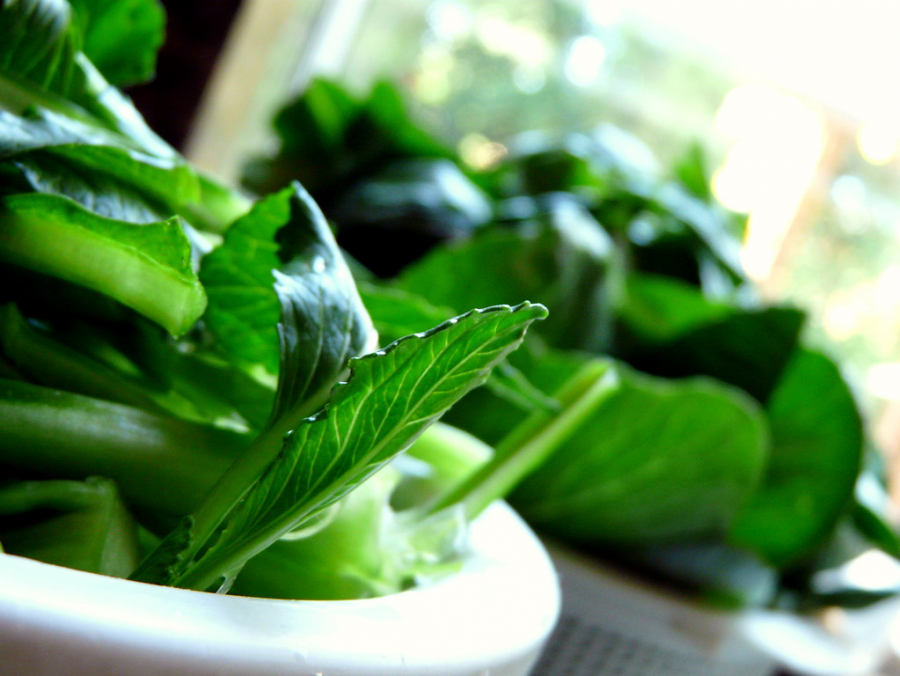A beginner’s guide to vegetarianism
“Leafy Greens”
Vegetarianism is the practice of abstaining from meat, poultry and seafood. Many folks assume that a diet should consist of meat to be protein-rich and balanced, and this may be true in some ways, but leafy greens can be just as nutritionally fulfilling, and according to Sutter Health, can aid with feelings of anxiety and depression. So, eat your greens!
According to Zach Hrynowski of Gallup, a global analytics and advice firm, the percentage of vegetarians has remained stable over the past two decades, and interestingly, non-white Americans are three times more likely to describe themselves as vegetarian than white Americans. Public health researchers Samara R. Sterling and Shelley Ann-Bowen believe that this phenomenon could largely be due to the number of African-Americans and other minority groups disproportionately burdened with heart disease, cancer, diabetes, obesity and chronic kidney disease.
Communities with such prevalent illnesses may transition to vegetarian diets to decrease health risks associated with eating fatty, processed foods. In general, obesity is a growing epidemic in the US. According to the Center for Disease Control, about 42.4 percent of Americans were classified as obese in 2018, and that number has only increased.
On the other hand, a large percentage of vegetarians choose to eat a meat-free diet in an effort to end animal slaughter. As reported by PETA (People for the Ethical Treatment of Animals) about nine billion chickens are killed in the US alone each year. Regardless of one’s personal motivation, vegetarianism could save lives, but how does one become a vegetarian?
Becoming a vegetarian can be challenging. Like any lifestyle change, it is easiest to transition if one has purpose. The first, most important step to becoming a vegetarian is to establish the “why.” Associate Professor of Music Kami Rowan became a vegetarian nearly 34 years ago because she didn’t believe that animals should be eaten by humans.
“I feel like from the time I became aware that eating meat meant I was eating animals, I wasn’t comfortable with it,” Rowan explained. “As a child I often wouldn’t want to eat meat when it was served to me. While this might sound strange to a carnivore, I always consciously recognized that flesh in my mouth was unnatural for me.”
Sophomore student-athlete Claire Hill had a different purpose in choosing vegetarianism.
“I decided to be a vegetarian because my family was doing a competition,” she said. “My older brother Jacob said he could be a vegetarian longer than the rest of us. My family’s competitive nature would not allow that, so we joined him on his vegetarian journey.”
Secondly, to become a vegetarian, it’s important to start slowly.
“If a person wants to try vegetarianism, I suggest he or she start small,” said senior Sonya Brunk. “That person doesn’t have to cut out meat at first; he or she can take small steps toward a meatless diet. Eventually, the diet becomes natural.”
Rowan even says that the lifestyle is “such a part of me now that I don’t think about it much.”
Lastly, it is crucial to have a support system. A veggie-buddy can be encouraging. Change is hard, and cravings are real. Not only may one get meat cravings, but he or she may begin to consume sugary foods. Hill admits that she heavily relied on carbohydrates and had to consciously adjust her diet so as to refrain from unhealthy eating habits that were technically vegetarian. However, competing with her family was helpful. They all supported each other throughout the entire transition.
Vegetarianism has many health benefits that could be crucial to ending the obesity epidemic in the US. With purpose, patience and a little support, one can easily make the decision to go meat-free.
If you are interested in becoming a vegetarian, try this flavorful, meatless recipe from Olive Magazine!
Veggie Fajitas
Ingredients:
- oil for frying
- 1 onion, halved and sliced
- 1 red pepper, sliced
- ½ teaspoon ground cumin
- ¼ teaspoon hot smoked paprika
- ½ teaspoon mild chilli powder
- black beans, rinsed and drained
- 4 flour tortillas, warmed
- mature cheddar, grated
- 4 tablespoons sour cream
- hot sauce (optional)
Method:
Step One:
Toss all the salsa ingredients together with a good pinch of salt and leave to sit while you make the fajitas.
Step Two:
Heat 1 tbsp of oil in a large pan and cook the onion and pepper over a high heat until softened and starting to char at the edges. Turn down the heat and add the spices, tossing well. Add the beans with a splash of water and keep cooking until the beans are piping hot.
Step Three:
Serve the beans in warm tortillas with the salsa, cheese, sour cream and hot sauce, if you like.










